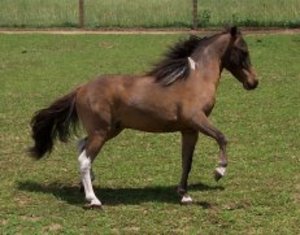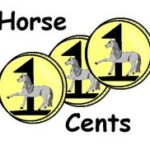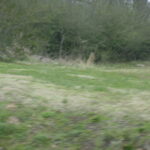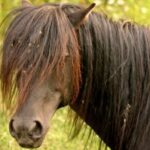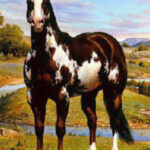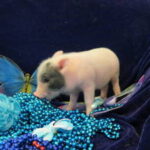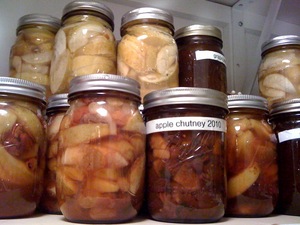Pets are a part of most people’s everyday lives. A relatively new pet has become more and more commonplace nowadays. Miniature horses that were once considered ‘exotic’ pets are almost a common consideration now. Prices have become more reasonable making them more of a possible choice for casual backyard pet owners who want something cute and fuzzy, and still exotic in the realm that it is like having a piece of country in your backyard-especially if you live in a suburb, or city.
While many towns and suburbs have special ordinances now regarding animals like potbelly pigs, and miniature horses it’s wise before purchasing such a pet to check with your local zoning office. Should you find yourself clear on that aspect then you’re ready to really consider what owning a miniature horse means for you.
Cute and as small as a dog:
That’s the normal thought that many have when confronted with a miniature horse, many of which are no bigger than an average German shephard, or Great Dane. Even more than full-sized horses miniatures are affectionate and have a great deal of love for their human caregivers. The fact that miniatures are so small, and their extra-loving natures does lead some new owners to think of them more like dogs than the horses that they are.
Make no mistake, however, these pint-sized equines are not dogs. They have the same needs for care and housing that their larger counterparts have. They do not act like dogs either.
In my experience a miniature horse will act like-a horse. Ask anyone that owns these loveable little creatures and I’m sure they’ll agree. So if you have no experience with full-sized horses it is a very good idea to get in touch with someone who does, or to be sure to buy your first miniature from someone willing to spend the time to educate you on how horses act, and need to be handled. Injuries do, and can occur while handling miniature horses. When they’re not handled appropriately accidents happen.
The backyard stable:
The backyard can be a suitable place for your miniature horse. Their space requirements are much smaller than that of their larger cousins. They do however require adequate shelter from rain, snow, and even glaring sun. In many instances a garden shed, or small wooden shed will do just fine. Some of the smallest of the miniature equines can do rather well in a large Great Dane sized igloo or doghouse. Be sure however, to find out what size miniature you are going to get before building, or buying your new little barn so that you have made the proper size adjustments.
Fences are very important when owning horses of any size. Miniature horses do best if they have an area they can get out and move about in. If your backyard already has a sturdy fence, and you are happy to let your new pet roam about at will, then you won’t need any further fencing. If you would rather your grass not be grazed down to the dirt, or your favorite petunias stayed healthy and alive, fencing is your next consideration.
Barbed wire, no matter what romantic images of the old-west it might inspire, is an absolute no-no with horses of any size. Many farm stores sell cattle panels, which are my favorite means of fencing. They come in heavy welded sections of 16 x 5 and will do well for any size miniature you acquire. Field fencing that is sold in rolls is also fine.
Some miniature horse owners use metal t-posts for their fencing poles and they work just fine. I prefer wooden 4×4’s for their more attractive nature as well as a little bit more safety as t-posts can provide some hazards with their sharp tops if not properly capped. Wood posts take more effort in installing, however, and are much more permanent. T-posts give you the option of movement should you desire to change your fencing structures at a later date.
Feeding is the next item you will have to take into consideration. You are not going to be able to trot down to your local shop and save and pick up a bag of Purina Horse Chow. (By the way, there IS a Purina Horse Chow, but your local grocery isn’t likely to have it in stock). You need to find feed stores that stock large animal feeds for the grain requirements of your new pet, and then find a source for the mainstay of their diet: HAY.
Finding adequate hay supplies is the bane of every horse owner, large, small, multiple, or one. Find out from the seller you are purchasing from where they get their hay if they are close enough to you for that to make a difference, or check out local stables, and rural papers want ad sections for sources of hay. You will soon learn where all the horse owners are for miles around as you begin to develop a whole new circle of friends and acquaintances based on your new horse-ownership.
The next item on the agenda is to find a veterinarian who has a large animal practice. Even though your miniature is no bigger than a dog, your local small-animal vet is not going to have the skills, or the license to practice medicine on them. They have the same specialized needs as a large horse and the veterinarian you find needs to be in that category. Beware, however, that many large animal vets do not have adequate knowledge for dealing with some of the extra-specialized issues revolving around miniature horses so be prepared to build your own knowledge base so that you can be of service to your vet in dealing with your animal’s needs, as well as to catch any mistakes he might make… and they do happen.
Finally you will need to find a farrier. That is the person that will keep your miniature horse’s feet in shape. The old adage ‘no foot, no horse’ is true no matter what size equine you have, and a simple nail clipper isn’t going to do it for your four-hoofed friend. Trimming the hooves of miniature horses is particularly hard on the backs of any normal sized adult, however, and you may find it difficult to get a farrier willing to do the job. Some are very good at it, and quite willing to handle the darling little horses, but should you come upon a brick wall in that area, you may find yourself needing to learn a specialized skill in order to keep your new pet’s feet in proper working order. Luckily it is not impossible to learn how to do a good job trimming your miniature horses feet, and the tools required are minimal and easy enough to find if you search for them. It IS a skill, however, and one that needs to be learned so you will have to find someone willing to train you. It’s entirely possible the person you purchased your new mini will know of either a good farrier in your area, or how to do it themselves.
Find on-line forums that can help you build the knowledge you need. Lilbeginnings.com is one such place and has an active community on their forums where you can talk to other miniature horse owners, and learn from them as well as sharing in the happiness that is owning a miniature horse.
Once you have all your equipment, housing, and knowledge in place, you are sure to find Miniature horses a wonderful addition to you life, and one you can’t remember how you ever lived without.
Reference:
- AMHR The American Miniature Horse Registry-www.shetlandminiature.com/amhr.shtml
